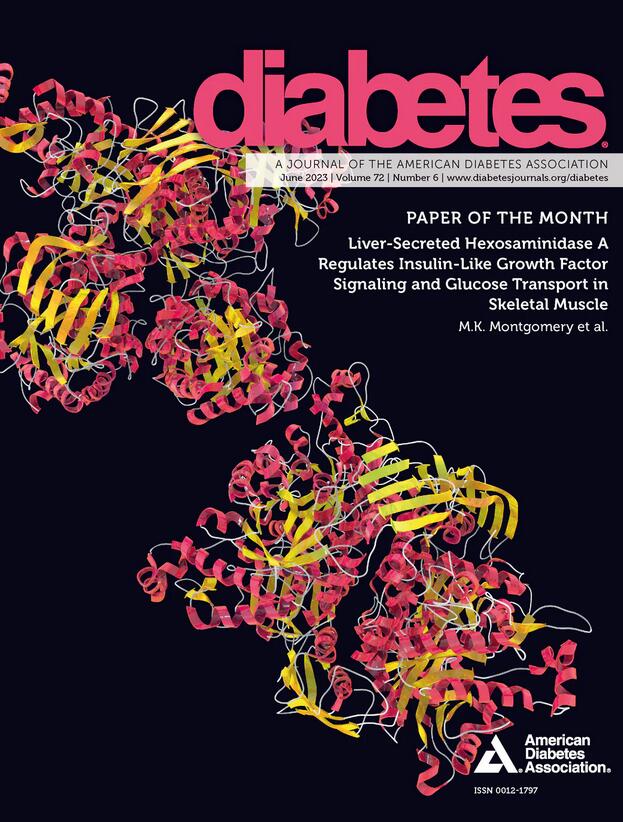一个神经系统:中枢神经系统与外周神经系统健康之间的重要联系以及对肥胖症和糖尿病的影响
IF 6.2
1区 医学
Q1 ENDOCRINOLOGY & METABOLISM
引用次数: 0
摘要
中枢神经系统(CNS)(大脑和脊髓)与外周神经系统(PNS)之间存在着关键的差异,例如神经胶质细胞的类型、是否有血脑屏障的保护、突触连接的模式等。然而,神经系统的这两个臂膀之间还有更多相似之处,包括神经元结构和功能、神经免疫和神经血管相互作用,最重要的可能是神经可塑性(包括神经元存活、神经元突起生长、突触形成、胶质细胞生成等过程)和神经变性(神经元死亡、轴突病变和脱髓鞘等周围神经病)之间的平衡。这篇文章汇集了当前有关中枢神经系统和周围神经系统之间神经系统健康和疾病的共同机制的研究证据,尤其是肥胖症和糖尿病等代谢性疾病。这些证据支持这样一种说法,即神经系统的两个臂膀是紧密联系在一起的,以前未被充分研究的中枢神经变性或外周神经变性实际上可能通过共享的遗传和细胞机制同时在整个神经系统中表现出来。由于大脑研究和外周神经研究之间存在研究孤岛,而且神经科学作为一个研究领域过于强调大脑,因此这一课题的研究一直严重不足。在人体的这一个神经系统中,神经元是如何保持健康的,又是如何经历损伤和疾病的,这两者之间可能存在着共同的关联机制--这为了解神经系统疾病的病因和未来神经保护疗法的开发提供了新的机遇。本文章由计算机程序翻译,如有差异,请以英文原文为准。
One Nervous System: Critical Links Between Central and Peripheral Nervous System Health and Implications for Obesity and Diabetes
There are key differences between the central nervous system (CNS) (brain and spinal cord) and peripheral nervous system (PNS), such as glial cell types, whether there is protection by the blood-brain barrier, modes of synaptic connections, etc. However, there are many more similarities between these two arms of the nervous system, including neuronal structure and function, neuroimmune and neurovascular interactions, and, perhaps most essentially, the balance between neural plasticity (including processes like neuron survival, neurite outgrowth, synapse formation, gliogenesis) and neurodegeneration (neuronal death, peripheral neuropathies like axonopathy and demyelination). This article brings together current research evidence on shared mechanisms of nervous system health and disease between the CNS and PNS, particularly with metabolic diseases like obesity and diabetes. This evidence supports the claim that the two arms of the nervous system are critically linked and that previously understudied conditions of central neurodegeneration or peripheral neurodegeneration may actually be manifesting across the entire nervous system at the same time, through shared genetic and cellular mechanisms. This topic has been critically underexplored due to the research silos between studies of the brain and studies of peripheral nerves and an overemphasis on the brain in neuroscience as a field of study. There are likely shared and linked mechanisms for how neurons stay healthy versus undergo damage and disease among this one nervous system in the body—providing new opportunities for understanding neurological disease etiology and future development of neuroprotective therapeutics.
求助全文
通过发布文献求助,成功后即可免费获取论文全文。
去求助
来源期刊

Diabetes
医学-内分泌学与代谢
CiteScore
12.50
自引率
2.60%
发文量
1968
审稿时长
1 months
期刊介绍:
Diabetes is a scientific journal that publishes original research exploring the physiological and pathophysiological aspects of diabetes mellitus. We encourage submissions of manuscripts pertaining to laboratory, animal, or human research, covering a wide range of topics. Our primary focus is on investigative reports investigating various aspects such as the development and progression of diabetes, along with its associated complications. We also welcome studies delving into normal and pathological pancreatic islet function and intermediary metabolism, as well as exploring the mechanisms of drug and hormone action from a pharmacological perspective. Additionally, we encourage submissions that delve into the biochemical and molecular aspects of both normal and abnormal biological processes.
However, it is important to note that we do not publish studies relating to diabetes education or the application of accepted therapeutic and diagnostic approaches to patients with diabetes mellitus. Our aim is to provide a platform for research that contributes to advancing our understanding of the underlying mechanisms and processes of diabetes.
 求助内容:
求助内容: 应助结果提醒方式:
应助结果提醒方式:


